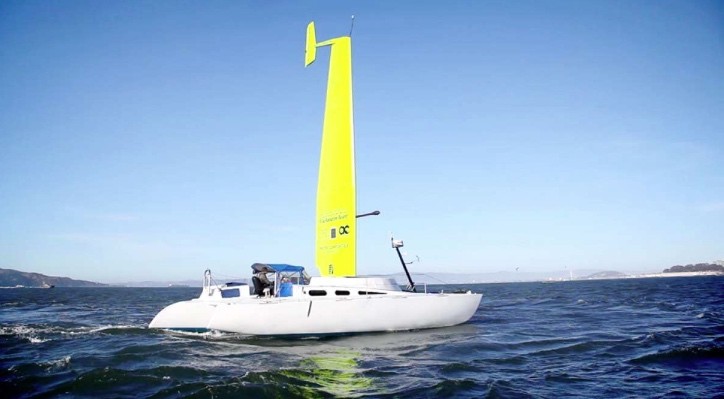While the automotive industry is somewhat busy designing greener ways of transportation, it appears the nautic world is doing something similar too. And we're not thinking of yachts the rich buy as water toys, we're talking about ferries, those big vessels that carry people and sometimes cars from one shore to the other. Believe it or not, it appears they are huge oil-consumers too.
After all, we are looking at a vessel capable of shipping tens if not hundreds of people at a time and it does a lot these trips. In fact, according to Popular Science, a high-speed ferry burns 6,600 gallons of fuel a day, on average. Not only is that a lot judging by the carbon print these puppies leave behind, but it also is a matter of high expense.
Here's where Wind+Wing Technologies based in Napa, California comes in, a company currently working on a way to reduce that number. Using a 40-foot-tall carbon fiber "wingsail" the ferry they see fitting best in the future would back up the gas-running motor to lower the power needed to work to half, yet still travelling at the same speed.
It's a hybrid boat if you like, one that uses one of humanity's oldest means of propulsion which (hello!) is there to our dispossal for free. Here's where you'll say that we might as well use wind-sail vessels instead. Yes, but the difference is that this one comes with an innovative construction.
Sure, such technology will not come cheap, but according to WWT's business plans, it's a matter of a couple of years for the wings to pay for themselves. They are planning to outfit custom, 149-passenger ferryboats with two 75-foot-tall wings.
Ultimately, the design can be scaled up to carry 500 passengers. Estimated at $2 million for a pair of wings, the company has already run tests on a smaller 42-foot prototype vessel and is currently looking for public and private potential buyers. It seems there won't be any of them cruising sooner than 2020 though, but it sure sounds promissing.
Here's where Wind+Wing Technologies based in Napa, California comes in, a company currently working on a way to reduce that number. Using a 40-foot-tall carbon fiber "wingsail" the ferry they see fitting best in the future would back up the gas-running motor to lower the power needed to work to half, yet still travelling at the same speed.
It's a hybrid boat if you like, one that uses one of humanity's oldest means of propulsion which (hello!) is there to our dispossal for free. Here's where you'll say that we might as well use wind-sail vessels instead. Yes, but the difference is that this one comes with an innovative construction.
3,000 square foot wings
According to the source, unlike traditional sails, the wings require no expertise to operate. The substantial area of the wings - nearly 3,000 square feet- will catch up to 72,000 pounds of wind force. Moreover, the futuristic wings will be equipped with GPS systems and vessel data reocrders and will be powered by photovoltaic cells. Used in conjunction with an electric or clean diesel engine, they will adjust automatically. The only thing the ship's captain needs to do is basically push the on/off button.Sure, such technology will not come cheap, but according to WWT's business plans, it's a matter of a couple of years for the wings to pay for themselves. They are planning to outfit custom, 149-passenger ferryboats with two 75-foot-tall wings.
Ultimately, the design can be scaled up to carry 500 passengers. Estimated at $2 million for a pair of wings, the company has already run tests on a smaller 42-foot prototype vessel and is currently looking for public and private potential buyers. It seems there won't be any of them cruising sooner than 2020 though, but it sure sounds promissing.
